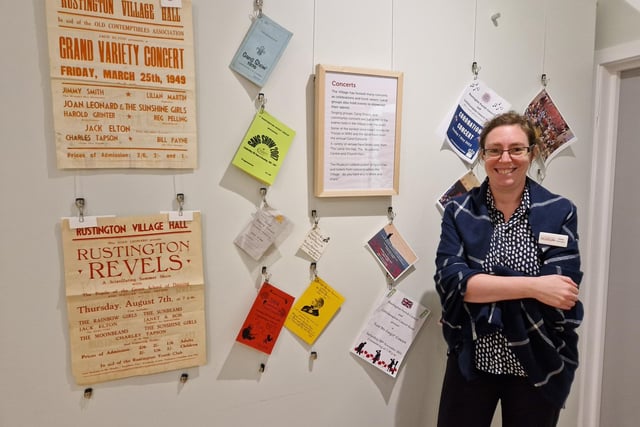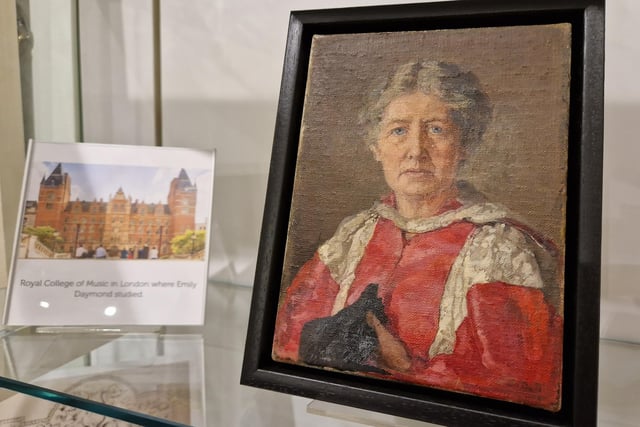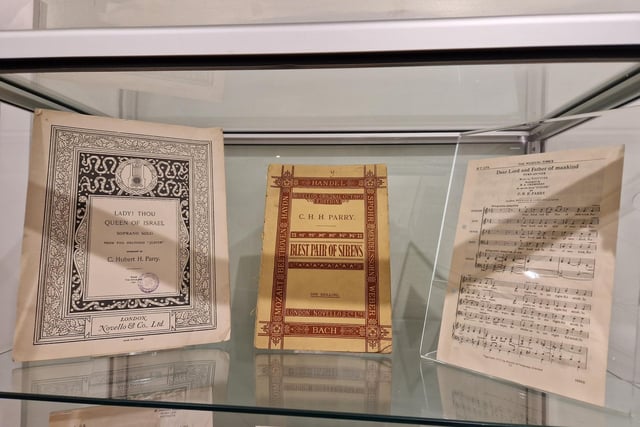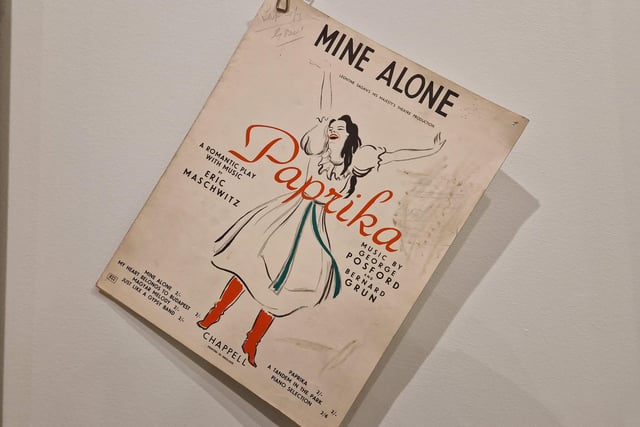Museum manager Claire Lucas has put together Musical Rustington, a display all about the musical geniuses of the village, classical, comedy and operatic, but there is space to expand with additional material, including posters and photographs.
Claire said: "The new exhibition is all about Rustington's musical connections. You can't not include Sir Hubert Parry but there are some lesser known ones as well, so that is nice. Many of them had a connection to Parry, so he brought them here.
"There are so, so many people we could include so I have tried to find ones with a strong connection to Rustington, like ones who built a house here so they set down roots."
"I want people to get involved. We want to hear from choirs and anything else music related. There's the youth orchestra, the carnival and gang show. We are interested in posters and photos, memories and mementoes. We know all about the older people, so let's celebrate today.
“We want to bring the exhibition right up to date and we are asking people to share their musical memories. Are you in a choir, band or orchestra? Do you have tickets and programmes to share from local performances?”
Parry, who composed the hymn Jerusalem, moved to Rustington with his family in 1879, first staying at Cudlow House before building Knightscroft House nearby.
Claire said: "Parry so loved the village he named a tune after it and often referred to it as 'Dear Little Rusty' in his diaries. Parry died at his home in Knightscroft House and was interred at St Paul's Cathedral on October 16, 1918."
Composer George Posford also built a house in Rustington. He named the property in Sea Avenue as Sea Horses but it is now known as Sark House.
Claire said: "It is typical of the 1930s Art Deco style and the shame is said to resemble a piano. Many celebrities were party guests, including Noel Coward."
There is a strong female contingent represented as well, like Dame Ethel Smyth, who made a name for herself as a composer and was made a Dame in 1922.
Claire said: "She was introduced to Parry in 1881 and in her diaries, she records he lent her a canoe which she used regularly on her visits. He gave her musical critique and advice."
Dr Emily Daymond studied under Parry and became a devoted disciple. She stayed with him in Rustington on many occasions and they went on many bicycle rides together in the area.
Celebrated lutist Diana Poulton spent many childhood summers in Rustington, as her grandparents lived at Walnut Tree House, in The Street.
Composer and violinist Alice Verne-Bredt lived at Teneriffe, Glenville Road, with her husband William Bredt, also a composer. She pioneered teaching music to children and was an innovator in using percussion bands in music education.
Entertainers connected to Rustington include nimble 24st xylophonist Teddy Brown, who played with The Crazy Gang. He bought a house in Sea Road and changed the name to Xylophone House.
Several other members of The Crazy Gang lived in Kingston Gorse, including Bud Flanagan, and part-time member Stanley Holloway lived in Angmering.
There are modern performers included too, like drummer Ben Thatcher from Royal Blood who grew up in Rustington, bass payer Jon Thatcher from Delirious? who was born in the village and saxophonist Nigel Hitchcock, also born there.
You can see programmes concert programmes, carnival photographs and show posters. Claire said one issue with the posters is that not all are dated, so she would love to hear from anyone who knows the people mentioned.
Jack Elton features strongly, sometimes as 'The Atomic Comic', and there are names like The Rainbow Girls, The Sunshine Girls and pianist Charley Tapson.
Claire said: "Carnivals have been used to raise funds for societies and to celebrate festivals. The first ones in the village were by the Friendly Societies, such as The Ancient Order of Foresters, to raise money for local hospitals."
Visit Rustington Museum at Samuel Wickens Centre, Broadmark Lane Car Park, Broadmark Lane, Rustington.

1. Musical geniuses of Rustington
Rustington Museum manager Claire Lucas is looking for additional musical material, including posters and photographs Photo: Elaine Hammond

2. Musical geniuses of Rustington
This portrait of Emily Daymond is on loan from the Royal College of Music, where she studied under Sir Hubert Parry as a foundation scholar Photo: Elaine Hammond

3. Musical geniuses of Rustington
Rustington Museum's new exhibition is all about the musical geniuses of Rustington, classical, comedy and operatic Photo: Elaine Hammond

4. Musical geniuses of Rustington
Rustington Museum's new exhibition is all about the musical geniuses of Rustington, classical, comedy and operatic Photo: Elaine Hammond